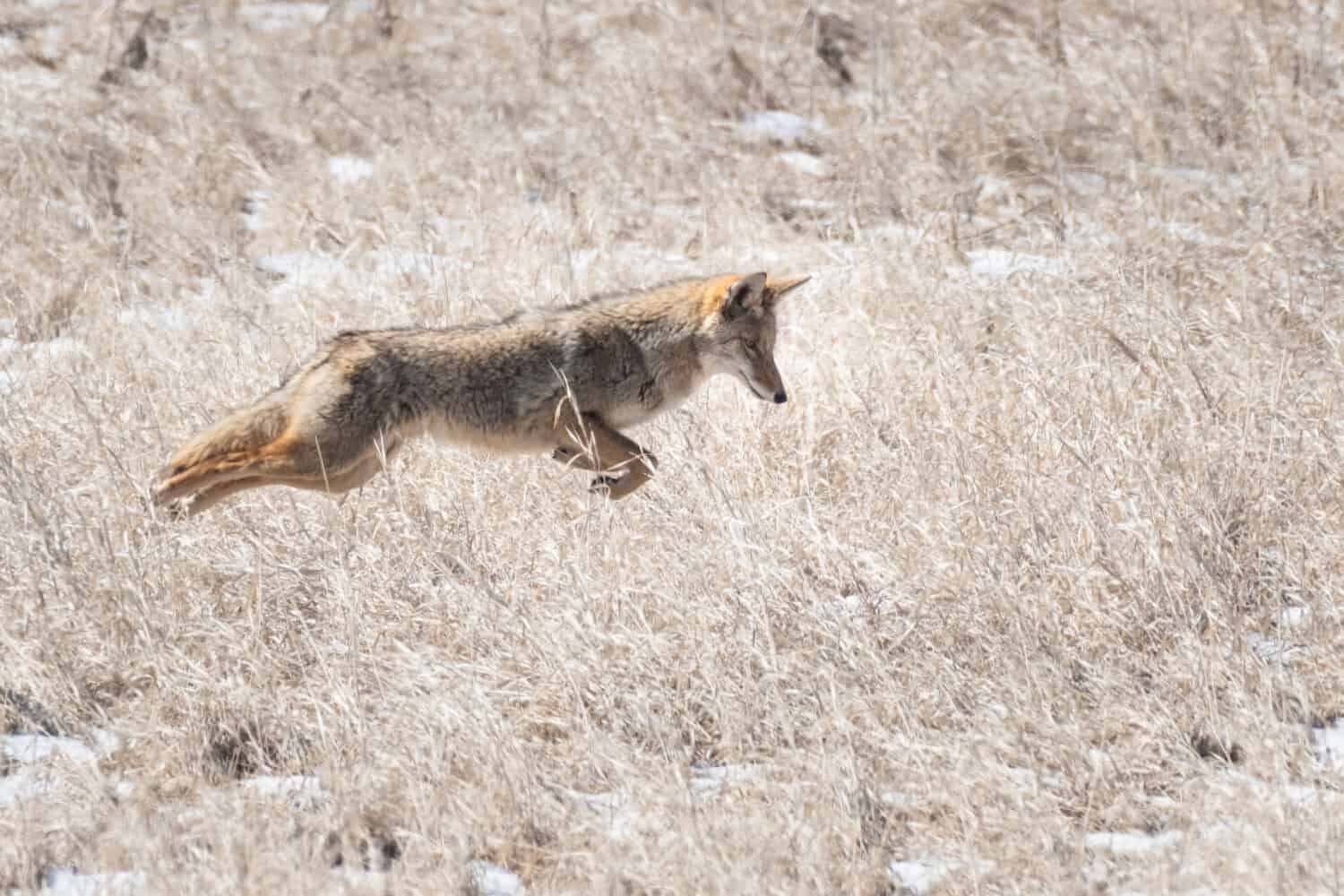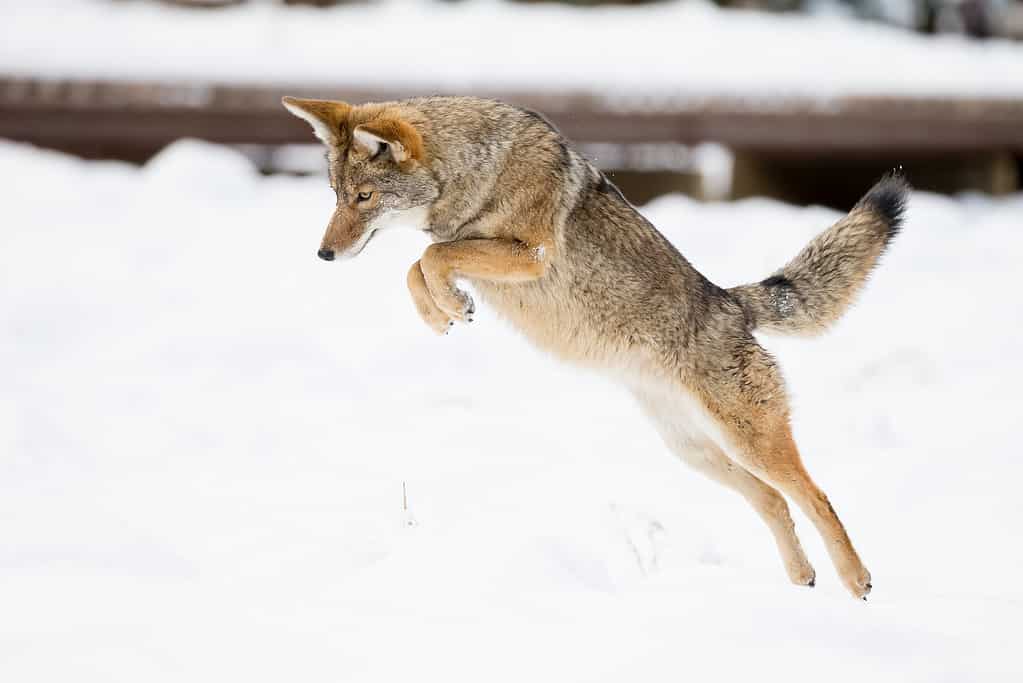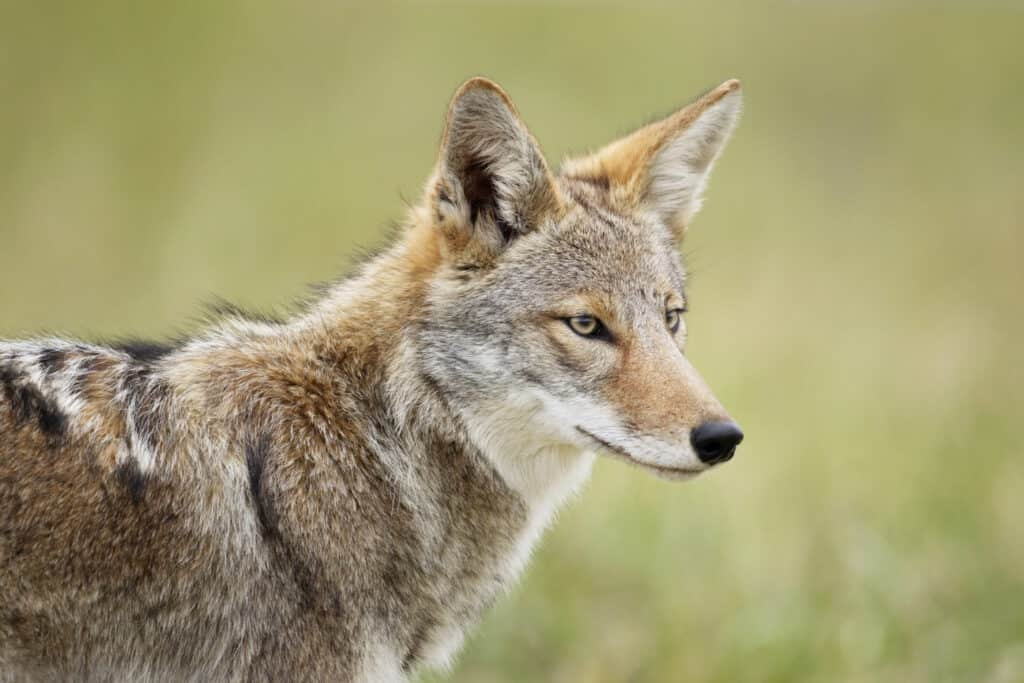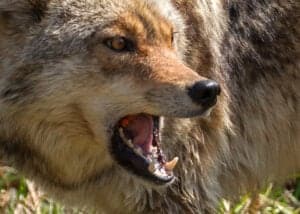Coyotes can jump as high as 8 feet, scaling barriers much taller than they are. They can even jump and then grab onto the top of an object with their front paws, clambering the rest of the way up with their back legs.
When you consider their ability to scale fences, they can clear barriers up to 14 feet high. If the barrier is any higher than 6 – 8 feet, they will need to use leverage to get over. If forced to jump from a stationary position, their jumping height is lessened to 4 – 5 feet.
When it comes to jumping horizontally, coyotes are also impressive. They can clear distances of up to 12 feet relatively easily. Usually, these jumps are used when pursuing prey. They will hide and then jump onto the unsuspecting animal. If they can get a running start, they may even be able to jump longer.
It’s important to note that the jumping abilities of coyotes can be influenced by various factors, such as their age, physical condition, and the terrain they are navigating. These measurements are approximate and can vary in individual cases.
Bigger animals usually jump longer and higher than smaller ones.
How Coyotes Jump

Coyotes can jump over fences and other structures.
©Eivor Kuchta/Shutterstock.com
You’d imagine that coyotes jump about the same as humans. However, because they have four legs (instead of our two), this isn’t the case. Coyotes are able to clear fences much taller than many people believe, thanks to how they jump.
Coyotes jump in two phases. Firstly, the animal jumps and grabs hold of the top of an object with their paws. This allows them to gain so additional height. Then, they are able to “jump” again to bring their back paws into contact with the top of the fence. All of this takes less than a second.
Once on top of the fence (or other objects), the coyote jumps down, using his back paws for momentum.
Because coyotes can do this “double jump,” they can scale fences that are 14 feet tall and even taller. Therefore, fences themselves aren’t going to keep most coyotes out. In coyote-infested areas, installing rollers or similar devices on top of your fence is essential to keep coyotes out of your yard.
The Problem with Coyotes Jumping

Coyotes can easily clear fences and enclosures to gain access to a backyard.
©Keneva Photography/Shutterstock.com
A coyote’s jumping ability can get it into trouble, especially when it tries to get around human defenses. Because coyotes can get over fences and enclosures, they can get access to people’s backyards and livestock areas relatively easily. They may target livestock, poultry, and pets in this manner.
Their ability to clear fences can concern farmers and pet owners who must protect their animals.
In urban areas, coyotes have become very good at getting over fences, walls, and other barriers. Unless a barrier is specifically designed to keep coyotes out, these innovative animals can often find a way in.
Coyotes’ jumping abilities can facilitate their movement into human-inhabited spaces. They can traverse walls, low roofs, and other barriers to access yards, gardens, or even balconies, potentially causing disturbances or damage to property.
Their ability to clear obstacles makes it more likely for them to encounter humans and pets, leading to problems on both sides.
Coyotes’ ability to jump can pose a danger when they encounter roads or highways. They may attempt to leap over fences or barriers to prevent wildlife from crossing roadways, increasing the risk of vehicle collisions and accidents.
Many barriers that would keep out other animals don’t deter coyotes.
Will a Coyote Jump a Fence to Get a Dog?

A coyote will avoid getting near humans and their pets unless starving.
©Paul Tessier/Shutterstock.com
Coyotes can clear a 14-foot fence using their jumping and scaling abilities. However, they cannot clear the same amount of distance with a pet in their mouth. Therefore, their clearing capacity will be lower, probably closer to 6 or 8 feet (though it depends on the exact coyote and weight of the pet).
Coyotes are also exceedingly cautious. They wouldn’t be so good at living alongside humans if they weren’t. They will always prefer easier prey opportunities than going after pets behind fences.
However, if food is scarce, the coyote may decide that a small, vulnerable, unattended dog is worth the risk.
While coyotes can go after pets behind fences (not unheard of), it will be pretty rare.
How to Keep Coyotes Out

Don’t rely on a tall fence as your only defense against coyotes, instead, create barriers against them.
©vfhnb12/Shutterstock.com
There are many ways you can keep coyotes out of your yard – even when they can scale tall fences. The key is not to rely on a tall fence alone, as this is often insufficient.
Instead, you’ll need a fence that is at least 8 feet high (to prevent the coyote from clearing it in a single bound). Then, you’ll need to install a roller or inward-facing overhang at the top. These make it difficult for the coyote to get a grip on the top of the fence.
Whenever letting dogs or small children outside, supervision is recommended. Coyotes are much less likely to attack an animal or child that is supervised. They don’t like risks.
Be sure to remove other attractants from your yard, too. Pet food, fallen fruits, and garbage can entice coyotes into your yards. Once they’re there, they may be brave enough to go after a small dog or cat, too.
Coyotes are most active at night. Use motion-sensor lighting to deter them from visiting your yard when it’s dark. These lights can scare them away while you sleep. (However, coyotes are also very smart and will figure out that the lights don’t indict a threat eventually.)
The photo featured at the top of this post is © Eivor Kuchta/Shutterstock.com
Thank you for reading! Have some feedback for us? Contact the AZ Animals editorial team.





